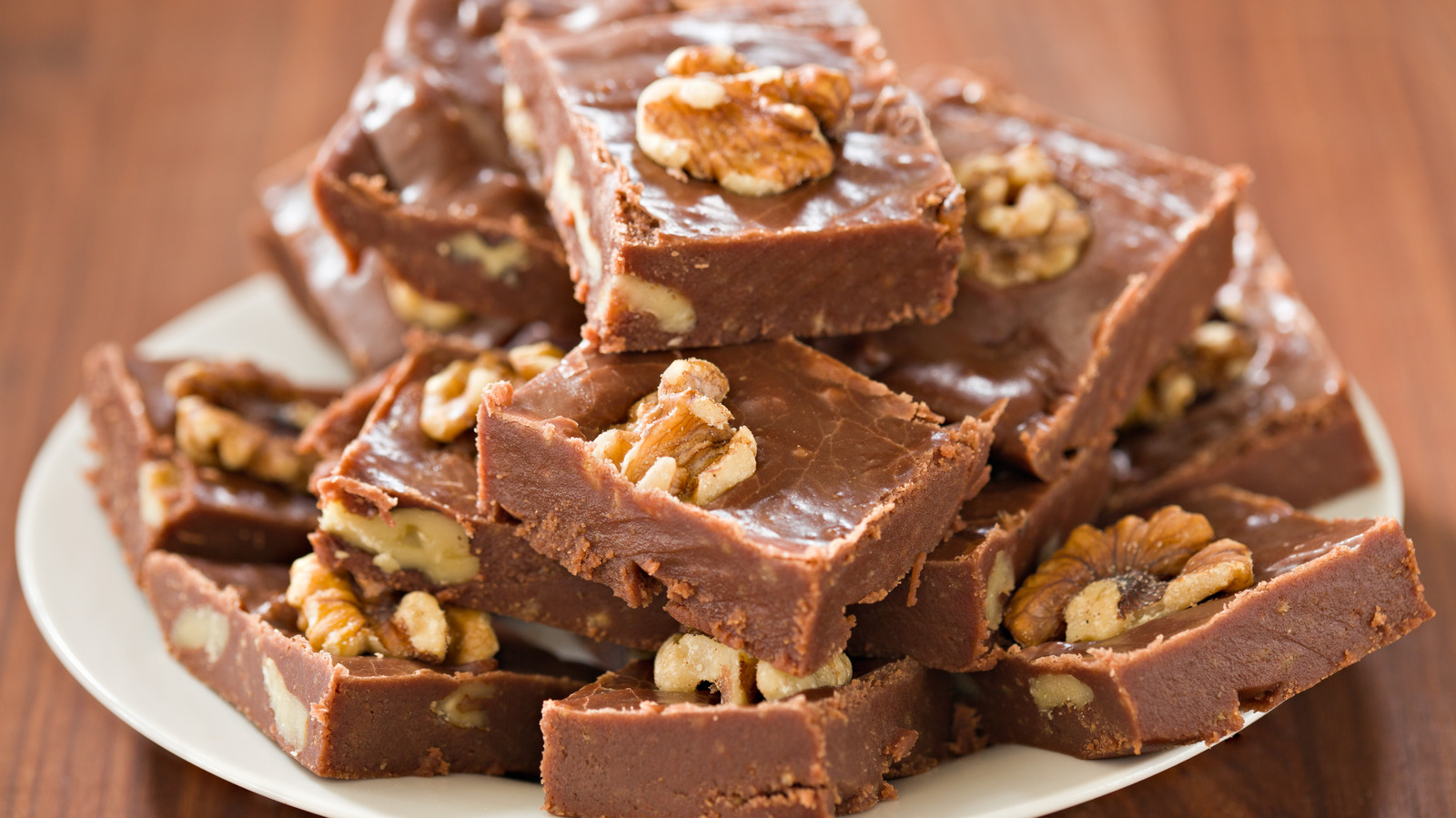The very best fudge is the kind that's silky smooth, and when it's made right, it's truly something to behold. When the process goes wrong, however, it can turn even your favorite grainy. Fortunately, there's an easy way to avoid making the mistake that can completely ruin the texture of your fudge and a neat scientific explanation as to why that grainy crystallization happens.
First, let's talk about what you need to do to get that creamy smoothness. Fudge can develop an undesirable graininess during the cooling period after you've heated and melted your ingredients. Temperature control — and a good thermometer — is important, and you'll want to aim for a melting point of 235 degrees Fahrenheit.

That's the soft-ball stage, which is when your ingredients essentially bind to form fudge. The next step is letting it cool — and this is what you don't want to mess up. The recipe will tell you to cool your fudge mixture to between 110 and 130 degrees Fahrenheit, and during that cooling period, you mustn't stir it.
Don't move the pot: Leave it alone, aside from the occasional temperature check. It's during this cooling stage that crystals form, and it'll turn fudge from smooth to grainy. This is due to a fascinating bit of chemistry that happens in other candy-making recipes, too, and while in some it can be exactly what you want, it's what you want to avoid in fudge.
The texture in candy comes from the formation of seed crystals Fudge's texture comes from the way sugar first .























